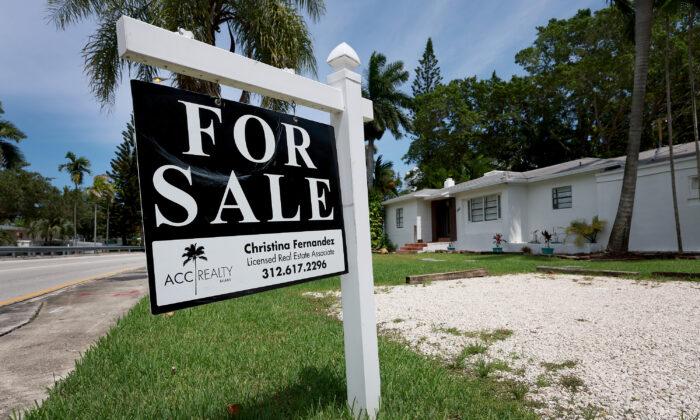Home prices across the United States rose for the second consecutive month in March amid widespread shortages and inventory issues, according to data published on May 29.
Nationwide, home prices in March were 0.7 percent higher year over year, although still lower than the 2.1 percent annual gain seen in February.
The index is now just 3.6 percent below its June 2022 peak, according to S&P.
Elsewhere, S&P’s 20-city home price index, which tracks housing values in the 20 largest metropolitan areas, saw a month-over-month increase of 0.5 percent, after seasonal adjustment.
Mortgage Rates, Volatile Economy Impacting Market
“Two months of increasing prices do not a definitive recovery make, but March’s results suggest that the decline in home prices that began in June 2022 may have come to an end,” said Craig Lazzara, managing director at S&P DJI, in a statement. “That said, the challenges posed by current mortgage rates and the continuing possibility of economic weakness are likely to remain a headwind for housing prices for at least the next several months.”While housing prices are up nationwide, S&P analysts noted some “stark regional differences”—housing costs in Miami, for example, are up 7.7 percent, while costs in Tampa, Florida, and Charlotte, North Carolina, are up nearly 5 percent.
Further West, in places like Seattle and San Francisco, prices have fallen between 11–12 percent year over year, according to the data.
The latest data come amid soaring mortgage rates and a limited supply of new and existing homes being placed on the market that has put pressure on U.S. home prices nationwide. The ongoing debt-limit negotiations and inflation that just won’t budge have further added to the woes.
Prices Unlikely to Fall
“Since rates have been so volatile and for-sale inventory still scarce, we have yet to see sustained growth in purchase applications,” MBA vice president Joel Kan said. “Refinance activity remains limited, with the refinance index falling to its lowest level in two months and more than 40 percent below last year’s pace.”Mortgage rates are widely expected to rise further as the Federal Reserve continues to increase interest rates in order to bring down inflation.
Bankrate mortgage analyst Jeff Ostrowski believes that mortgage rates will likely remain between 5–6 percent over the next year, creating a “tough market where there are going to be more buyers than sellers for the foreseeable future.”
However, Zillow senior economist Nicole Bachaud told HousingWire that while she believes inventory issues and high prices will likely remain a challenge, new construction could bring some relief to buyers.





